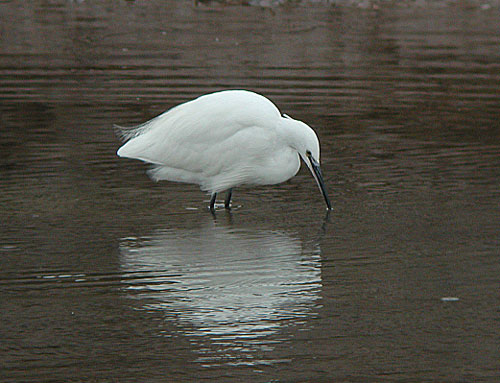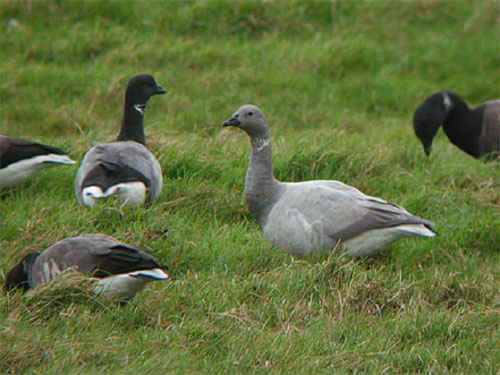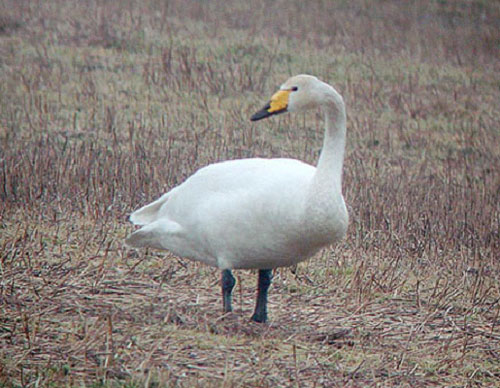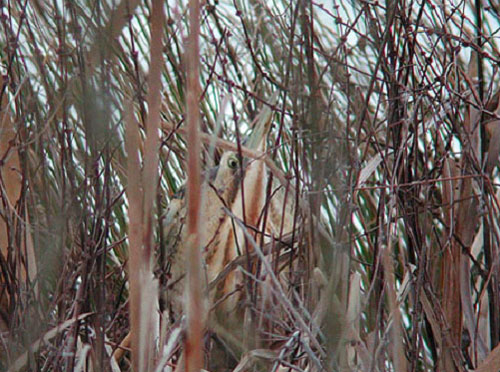
At the end of November 2004 surfbirds was invited to take part in a Norfolk Tourism sponsored weekend tour of North Norfolk. Ian Boustead, a regular contributor to the surfbirds galleries offered to represent surfbirds and to act as photographer to the tour. He recalls his trip through images and words.
We are very grateful to Norfolk Tourism for the invitation to visit Britain's premier birdwatching county. If you'd like more information on birdwatching in Norfolk try any of the links in the left hand margin.
Click here for the latest Bird and Wildlife Photos from Norfolk
Search Latest Norfolk Bird and Wildlife Photos by Site
|
|
|
Introduction
Last November, I spent three days in North and West Norfolk looking at the various birding sites from the perspective of a visiting birder from the North of England. I have visited Norfolk many times, however, only for brief one day twitches to see a variety of rare birds that have turned up in the area. Consequently, this was my first weekend break in the county and my first real opportunity to visit the numerous reserves in the area.
Morston Quay
My first port of call was to Stiffkey Fen in an attempt to spot the Lesser Yellowlegs, wintering in the area. The National Trust Car-park at Morston Quay gave good access to the marshes and creeks and flocks of dark-bellied Brent Geese, an uncommon bird in my home area of Cleveland, could be seen flying around the marshes. In the main creek, I was able to obtain close views of an Avocet and three bathing Brent Geese, along with several Grey Plovers and Bar-tailed Godwits. Several Little Egrets were around and as a northern birder I am constantly amazed at the dramatic increase in the Little Egret population that the south of England has seen in recent years.
The only fisherman to be found around the moored fishing boats was a Kingfisher, using the bow of a boat as a lookout post!
 |
Little Egret, Morston Quay
|
Unfortunately there was no sign of the Lesser Yellowlegs, however, I did manage to locate a wintering Greenshank. Without specific directions to the bird, I decided to give up on the Lesser Yellowlegs and try my luck with the Shorelarks at Holkham Gap.
Holkham Gap
Holkham Pines and Gap are one of my favourite areas in Norfolk - if only pines would flourish in the sand dunes back in my native North-East! The pines are superb for late autumn migrants and are one of the best places in the country to see Pallas' Warblers. Unfortunately the autumn migration was over by the time of my visit, so it was straight through the pine woods and onto the beach. This sheltered bay is a great wintering area for Shorelarks, up to 16 birds had been seen in the area, plus a flock of 60 Snow Buntings.
 |
| Shorelark, Holkham Gap |
Whilst walking back to the car-park, I bumped into some local birders who were able to give me specific directions to the Yellowlegs. This led to a race against time to get back to Stiffkey Fen before the light faded. I discovered that I had originally been looking in the wrong area, but having been given directions I was able to locate the bird without a problem.
Snettisham RSPB Reserve
The following morning we were up and about well before dawn and made our way to Snettisham RSPB Reserve to watch the movement of Pink-footed Geese from their roost on the Wash to the fields surrounding the reserve. We were treated to a superb Norfolk dawn and watching the chevrons of geese heading into the sun-rise was a truly spectacular sight.
The reserve also holds a wide range of both dabbling and diving ducks, and holds amazing numbers of waders at high tide. The walk back to the car-park produced more Brent Geese, several flocks of migrant finches and a couple of Sparrowhawks which looked distinctly out of place, flying low over the mud-flats.
Coastal Path
Our next destination was the coastal path between Brancaster Staithe and Burnham Deepdale. The coastal fields are now managed by English Nature and this has benefited the local birdlife immensely, resulting in good numbers of wintering Brent Geese and Wigeon. We also managed to spot a leucistic bird in amongst one of the Brent Geese flocks. A Rough-legged Buzzard stopped off in the area for several weeks at the end of October, but had unfortunately moved on before our visit.
 |
Leucistic Brent Goose
|
Welney Wildfowl Reserve (www.wwt.org.uk/visit/welney)
Our final destination of the day was Welney Wildfowl Trust Reserve in time for a spot of late lunch at the visitor centre and a chance to watch the late afternoon feeding of the swans and ducks. The creation of the reserve has built up the numbers of swans wintering in the area, so that now seven thousand Bewick's Swan and two thousand Whooper Swans winter on, or around the reserve.
The reserve is now so popular, that the Wildfowl Trust is investing £2.3 million in a new visitor centre and access bridge. Just before we left, we saw hundreds of Black-tailed Godwits fly past on their way to their evening roost.
 |
Bewick's Swan
|
 |
Whooper Swan
|
Cley (www.wildlifetrust.org.uk/norfolk)
Our last morning was spent at the Norfolk Wildlife Trust Reserve at Cley. Here the freshwater marsh and reed beds are managed for the benefit of wildlife, including both local birds and migrants. There are several superb hides on the reserve around the specially made pools and scrapes.
Breeding birds at the reserve include Bittern, Avocet and Bearded Tit. During our visit we saw good numbers of Avocets, Black-tailed Godwits, Pintail, Shoveler, Wigeon and of course Brent Geese.
 |
Bittern
|
Titchwell RSPB Reserve
Our last visit of the trip was to the RSPB reserve at Titchwell. This is another of my favourite Norfolk sites due to the variety of habitat and the close views that can be obtained from the walk and hides. The feeders in the trees around the visitor's centre attract good numbers of wintering passerines, whilst the alders attract feeding Lesser Redpoll, with the occasional rare relative amongst them. The pools on the right of the walkway to the beach, gradually change from freshwater to saltwater, creating a range of habitats. This provides a haven for rare migrants. The mural in the visitor's centre depicts many of the different species visiting the reserve including most, if not all, the rarities.
During our visit from the footpath down to the beach we obtained superb views of "Sammy" the resident Black-winged Stilt, both Black-tailed and Bar-tailed Godwits, Spotted Redshank and Ruff.
 |
Black-winged Stilt, Titchwell
|
 |
Spotted Redshank, Titchwell
|
At the back of the pools, a Kingfisher was feeding and a Long-tailed Duck had taken up winter residence. We searched through the distant Dunlin, Ruff and Golden Plover for the wintering Little Stint and Curlew Sandpiper, unfortunately without success.
Off-shore there was a large flock of Common Scoter, which also included several Velvet Scoters, Eiders, Red-breasted Mergansers, Red-throated Diver and a couple of Slavonian Grebes.
 |
Velvet Scoter
|
Having a wide range of wintering birds, Norfolk provides a great winter break particularly for the inland birdwatcher. As it is so well watched there is a plenty of information available on the birds wintering in the area. The number of birdwatchers out in the field, even during the week provides a steady supply of up to date information. Unfortunately this did not help us with the larger birds of prey such as Hen Harrier and Short-eared Owl. Whether it was a result of the weather, a lack of rodent prey, or a combination of both, these birds were noticeable in their absence. However, this did not prevent us from having a great break and the spectacular sun-rise over Snettisham, with flocks of Pink-feet flying towards it was unforgettable.
References
General information www.visitwestnorfolk.com
Accommodation www.deepdalefarm.co.uk and www.brancasterstaithe.co.uk
Slavonian Grebe
|

